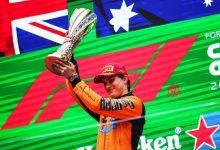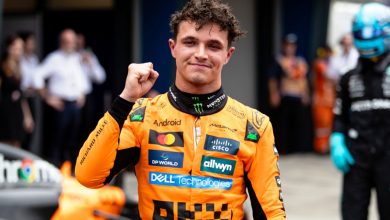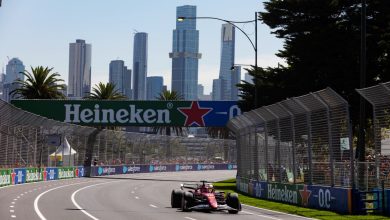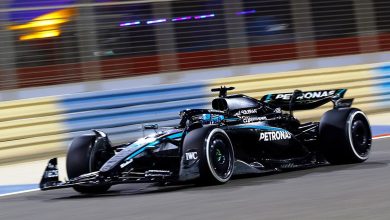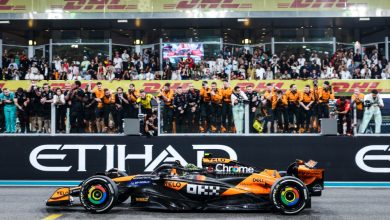We made mistakes and did not perform to our maximum: Toto Wolff
Bahrain, April 4: Torger Christian “Toto” Wolff, Executive Director, Mercedes, AMG Petronas Formula One team, admitted to a few mistakes made during the season-opener Rolex Australian Formula One Grand Prix in Melbourne.
In his own words, “Toto” explains: “We suspected that the new season would be closely fought and the first race confirmed those suspicions. We made mistakes and did not perform to our maximum – and it reminded us that this is the toughest racing series in the world, where every error is punished. It hurt to leave all those points on the table, especially because we know we had the pace to win in Australia.”
“Back at base, we did what we always do after a tough weekend. We made sure that we understand what went wrong and put a process in place to make sure that we don’t see a similar issue in the future. These painful moments are the real learning experiences. Mistakes become training,” he added.
“We expect Bahrain to be another challenging weekend, although the challenges will be of a completely different nature. The race in the desert is tricky because the conditions change drastically between sessions. FP1 and FP3 take place in the heat of the day whereas Qualifying and the race itself take place after sunset so it’s much cooler. That makes it extremely difficult to find the right set-up with the car.
“Bahrain is also a power-sensitive race with the long straights. We saw in Melbourne that the Ferraris, in particular, were very quick, so I expect it to be a close battle. We’ve seen some great racing in Bahrain in recent years, particularly between our drivers back in 2014, so I think we can look forward to an exciting and competitive weekend.
Featured this Week: What Are Engine Modes?
Over a million working hours have gone into designing, developing and constructing our 2018 Formula One car. While the result of some of that engineering work can easily be spotted by the untrained eye – for example, the complex aerodynamic bodywork – other equally important areas are hidden from sight.
One of the all-important elements that lie underneath the bodywork is the Power Unit (PU). In this modern, 1.6-litre V6 Turbo era, it’s much more than just an engine. The Power Unit is made up of six different elements – the Internal Combustion Engine (ICE), Turbo, MGU-K, MGU-H, Control Electronics, and Energy Store.
These elements are combined together to deliver different Power Unit modes, which drivers and teams can utilise throughout a race weekend. Over the course of the 2018 season-opening Australian Grand Prix weekend, these proved to be a particularly hot topic and sparked plenty of debate. So, what are Power Unit modes and why are they necessary?
PU modes are a combination of settings that adjust the performance of the ICE as well as the flow of electrical energy. The ICE performance is changed, for example, by varying the amount of fuel that is injected into the combustion chamber or by changing the timing of the ignition. For the Hybrid side of the Power Unit, the modes will alter the interaction and scheduling of the electrical energy for both deployment of the 120kW (maximum) MGU-K and recovery of both the MGU-K and MGU-H.
The main task of PU modes is to balance performance and reliability. Formula One is all about performance, but with just three Power Units per driver in 2018 (and only two of some systems), reliability is increasingly important. This is why the drivers have reduced mileage allocations of the higher power modes.
At Mercedes-AMG Petronas Motorsport, we use three basic modes over the course of the weekend – one for the majority of the free practice sessions, one for the majority of Qualifying and one for the majority of the race.
All three can be altered with various sub-settings for different situations, which control whether electrical energy is being net deployed over a lap, recovered or used in a balanced manner (with energy deployment and recovery balancing each other out).
At the start of the race, for example, performance is particularly important, so drivers will choose full deployment to either defend a good position on the grid or try and gain positions in the opening laps. But F1 is about a blend of ballsy on-track passing and tactical strategy, so the drivers will later switch to a recovery energy management mode and charge the battery – just to make sure they can have more energy available for their next attack.
Both Lewis Hamilton and Valtteri Bottas switched their race mode to lower performance during the Australian GP when they were stuck in traffic and the turbulent air of the cars ahead, in order to cool the engines and prevent them from overheating. A Safety Car presents a similar challenge – drivers want to conserve energy and the Power Unit, so the engine mode is set to reduce the duty and cool the hardware.
Conserving damage and the reliability of the Power Unit is also important in free practice. Pushing the engines to the limit in practice just doesn’t make sense, as they need to last seven race weekends. There is one session, however, when the Power Unit is pushed to the absolute limit and gives the drivers everything it can: Qualifying.
In terms of engine modes, the setting for Qualifying will be the most powerful one. This mode is only required for a few laps each race weekend, and usage varies according to the competitive context – sometimes this Qualifying mode will be used throughout Qualifying, sometimes only in the final Q3 session.
The available mileage is dictated by what is termed the “phase document”, which defines the limits to which the Power Unit may be used during each race weekend, and which is the same for the works cars and the Mercedes customer teams.
PU modes are defined when the first set of hardware is tested in Brixworth and the mileage limit is determined by the success of the long-run programme. Some of these are circuit-specific, others are more general. Making the call on which mode to use can either be the driver’s decision or through the advice of the engineering team – who will communicate over the radio which settings to adjust and which mode to switch to.
If you hear some technical-sounding instructions over the team radio, it might well be the Power Unit mode being changed. The drivers will then change the mode through the switches on their steering wheel.
PU modes are particularly significant at power-sensitive circuits such as Spa-Francorchamps or Monza, which are dominated by long straights and acceleration zones. The first power-sensitive track on the 2018 F1 calendar is Round 4 in Baku.
It will be interesting to see how the storyline around engine modes develops as the season progresses, particularly when F1 reaches those more power-sensitive venues.
Mercedes AMG Petronas F1 Team Release

